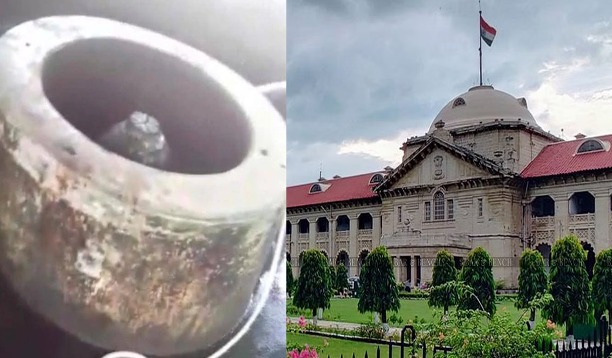
The Allahabad High Court on Friday has passed an important order directing the Archaeological Survey of India (ASI) to conduct a scientific survey (using modern techniques) of the ‘Shiva Linga’ that has allegedly been discovered inside the Gyanvapi Mosque premises in Varanasi to determine its age.
ASI also submitted its report outlining its thoughts on the procedures that might be used to determine the age of the Shiva Linga that was allegedly discovered inside the Gyanvapi Mosque premises in Varanasi.
The submission was made before the bench of Justice Arvind Kumar Mishra-I, who is currently hearing a revision petition filed by four women Hindu worshippers challenging the Varanasi Court’s October 14 order, which denied their plea for conducting a scientific probe of the ‘Shiva Linga’ to determine its age.
In its report, the ASI stated that direct dating of the Shiva Linga/Lingam is not possible, and the age can only be determined using proxy dating of elements that can directly connect with the establishment of the lingam, if one exists.
“We have to get the dates from the surrounding sediments and items for an object of religious significance such as Shiv Lingam or for that matter any other object or symbol made of stone etc,” the report reads.
Our readers may be aware that carbon dating is a frequently used method for determining the age of organic material, or things that were once alive.
Significantly, the ASI report states that radiocarbon dating of rock material is not conceivable since it lacks the presence of atmospheric-derived 14C.
However, the report adds that images of the Shiva Linga available on the internet show that the top part of the religious symbol has been divided into five sectors, and if this part was embedded or added (pasted) at a later stage (as it appears in the picture) on the top of Shivling using binders containing plant products or mortar, then this binder can be radiocarbon dated and can shed some light on the age of the religious symbol or modifications at later stages, if any.
However, a further condition has been added: just a small quantity (10gm) of the binder will be scratched out for dating, and this study will only reveal the age of the binder and embedment of the top portion, not the religious sign. However, using this technique, it is possible to deduce that the religious symbol is older than the embedding process.
According to the report, the following actions are proposed based on talks held during the meeting of several research labs with the Director General of ASI:
- Use ground penetrating radar (GPR) to determine whether the sacred symbol protrudes from the in-situ rock (Swayambhu) beneath the Gyanvapi grounds.
- When researching the geology of Varanasi, this area is mostly alluvial deposits, with little probability of encountering igneous/sedimentary rocks beneath, therefore zircon dating may be pushed to the end.
- If this is the case, the U-Pb isotopes present inside the zircon mineral can be examined to determine the date of the rock’s formation.
However, a caveat has been attached to this suggestion, stating that this technique works in the time domain of the order of million years, and thus it can only tell the in-situ nature of the religious symbol having the present for a very long time, and that this method is destructive, requiring approximately 5kg of material for extracting the zircon minerals.
It has also been advised that a site visit by concerned researchers from various research laboratories be organised/allowed so that a planned and concentrated investigation may be undertaken and more chances for new ideas/methods can arise.




